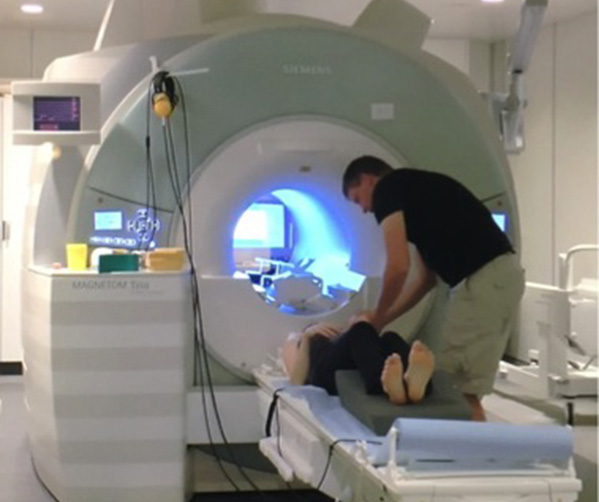Since I was a small child I’ve been known as a fidget. So when I was told I had to be very still for a series of seven minute MRI scans I was worried. I was a kid who, when bad dreams sent me running to my parents’ bedroom, kept my mum awake all night as I kicked and wriggled while ‘peacefully’ asleep. That’s the kid that grew into a woman who nightly and tosses and turns. How could I possibly stay still in the scanner? Let along REALLY still. Not even swallowing… Ironically, given the experiments we performed, I needed to still my body, to ‘play dead’ in order to prevent micro movements.
We are usually unaware of how many small movements that we make when we think we are being ‘still’. But in the MRI scanner these micro movements “due to swallowing, fidgeting, overt speech, or transmitted motion as a result of finger pressing on a keypad are a major cause of inconclusive or uninterpretable fMRI results in the clinical setting”. (Desmond et al. 2002). So, my body and brain need to be very still for the 5-10 minutes that a functional MRI scan takes to complete. This stillness created a self-consciousness that accentuated my sense of being embodied. I’d first noticed this during mindfulness meditation, the more mindful I became, the more ‘bodiful’ I realized I was. As I quieten my mind, my awareness is more open to, and often overwhelmed by the sensations in my body. Little aches and pains, the feels of the surface I am lying on, the temperature of the air as it fills my lungs, all these sensations flood in. As I practiced, knowing I would have to lie very still and not even swallow in the scanner, I found myself trying to control what are usually unconscious and small bodily movements, like those associated with breathing or swallowing. As a newbie mindfulness practitioner and a wannabe MRI subject I became hyper aware of my tiny movements and that awareness became tension which resulted in ticks and twitches. My ongoing lesson is to have the awareness but not to focus on it, not to turn it into tension. I noticed in the moment of imagining resisting movement, I would make a small movement. It was a sort of mental ‘tensing’ as I thought of wanting to move, and then tried to stop that thought, right then my muscles would alter as I imagined ‘not moving’.
This project is full of surprises, it’s made me know more about myself and taught me new things. But one of the biggest surprises was when I came out of the MRI scanner and the neuroscientist, Torben, commented on how still I’d been. I was stunned (and proud of myself). After 50 years of fidgeting and being told off for it, I am learning to stay still!
Desmond, John E, and Annabel S. H. Chen. “Ethical issues in the clinical application of fMRI: factors affecting the validity and interpretation of activations.” Brain and cognition 50, no. 3 (2002): 482-497.
